Conceptual art can often be a controversial art form riddled with differing opinions and open-ended debates. It directly addresses the age-old question, “What is art?” In this article, we’ll take a look at the history of conceptual art and the art movements that influenced it. We’ll also take a look at some iconic examples to better understand what it means. What is conceptual art and how do we define it? Let’s find out.
What Is Conceptual Art Movement?
First, let’s define conceptual art
There are dozens of art styles and movements but most have a fairly narrow definition. But that's not quite the case for our topic today. Conceptual art can be created from nearly any material. But the conceptual art definition will help us better understand its purpose and appeal to artists and art enthusiasts.
CONCEPTUAL ART DEFINITION
What is conceptual art?
Conceptual art is a form of art in which the concept is paramount to the visual or sensory components of the finished artwork. This type of art emphasizes the importance of an idea or concept over technique and aesthetic, largely used to express the abstract. It emerged as a movement in the early 1960s reaching into the mid-1970s. Conceptual art can look or be nearly anything the artist decides. Unlike other forms of art, it is not defined by physical forms, but rather the foundation of a concept that serves as the engine of creating art.
Iconic conceptual artists:
- Douglas Huebler
- Joseph Kosuth
- Art & Language Group
When Did Conceptual Art Begin
History of conceptual art
This category of art emerged as a movement in the early 1960s. However, the influences that led into the movement can be traced back even further. Artists as far back as the early 1900s questioned the boundaries of art.
The progression of this questioning influenced and led to the emergence of conceptual art as we know it today. Here's an informative breakdown of this broad category of art and its defining qualities.
The Case for Conceptual Art
Fountain by Marcel Duchamp
In 1917, artist Marcel Duchamp purchased a urinal and entered it as a sculpture in an open art exhibition in New York under the title Fountain. This is also one of the prime examples of another radical art movement, Dada.
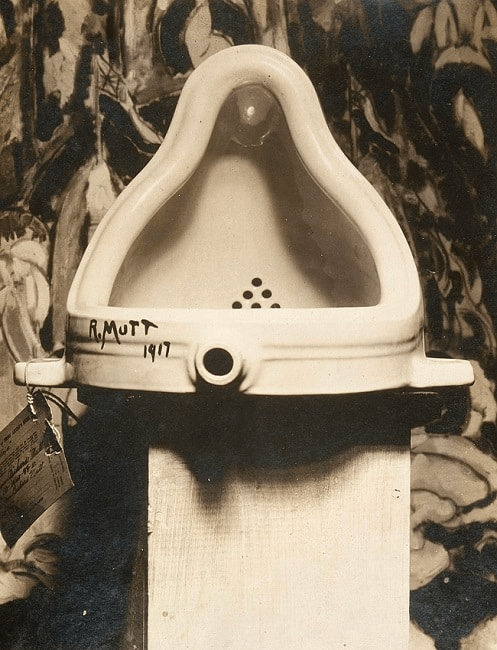
Fountain by Marcel Duchamp
While the jury ultimately rejected the piece, refusing to deem it worthy of being called art, Duchamp raised a brilliant question. What is art? Where do the boundaries of art lie? This idea was a seed that later bloomed into a foundational piece of the conceptual art movement.
Fluxus
Moving along to the early 1960s, the roots of conceptual art began to emerge, specifically within the movement of the Fluxus Art Movement.
Fluxus’ encouragement and open embrace of international art pushed the boundaries of what art could be. It provided fertile ground for those looking to push the conversation and attitude toward art and where it could go. Fluxus artists such as George Maciunas, Joseph Beuys and Yoko Ono.
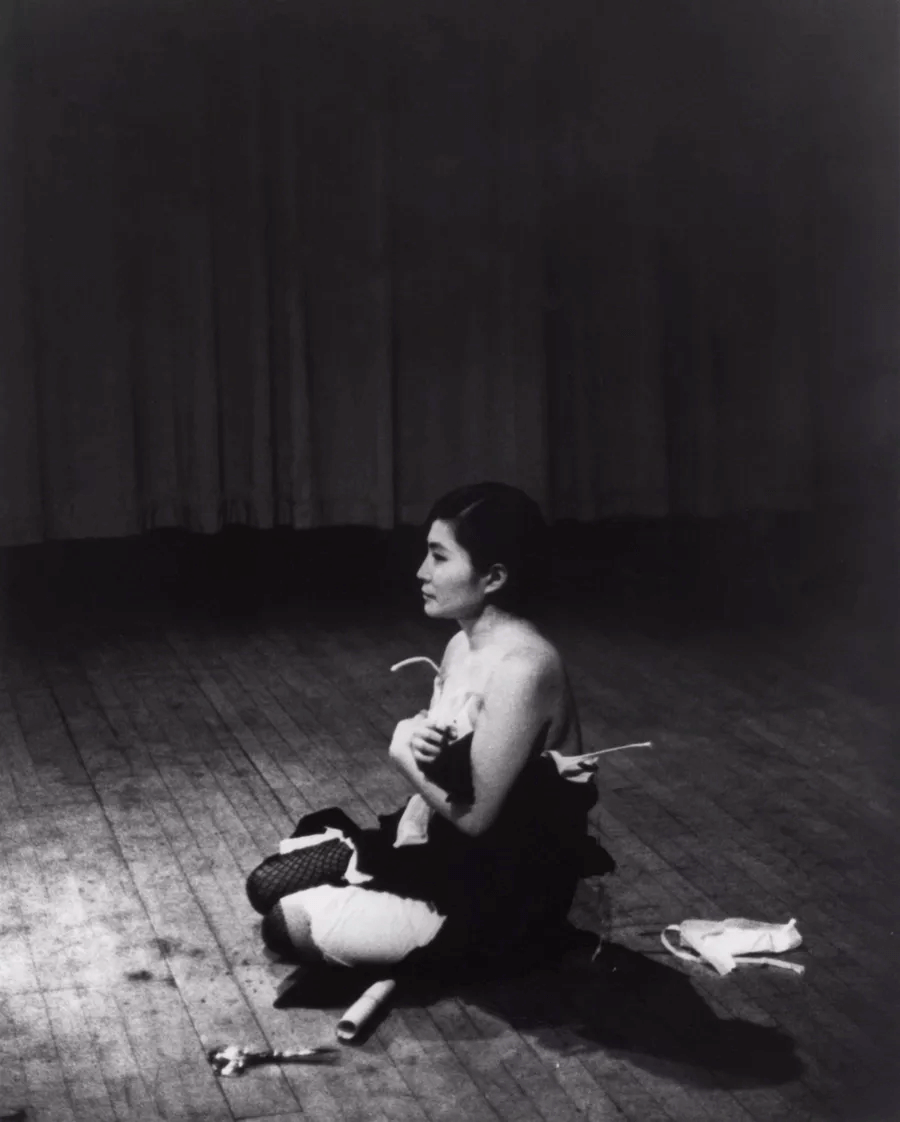
Cut Piece (1964) performed by Yoko Ono
While never specifically distinguished as a part of the conceptual art movement, Fluxus’ influence on it is undeniable. It provided a large inspiration for the questioning of art and the potential of conceptual led artwork.
Sol LeWitt ‘Paragraphs on Conceptual Art’
While conceptual art began to emerge in the early 1960s, it wasn’t until the late 60s that it became recognized as a full artistic movement with specific language to define it.
In 1967, American artist Sol LeWitt wrote ‘Paragraphs on Conceptual Art.’ In the article, LeWitt defines the form stating, “In conceptual art the idea or concept is the most important aspect of the work. When an artist uses a conceptual form of art, it means that all of the planning and decisions are made beforehand and the execution is a perfunctory affair.”
Around this time and for years after LeWitt’s article, some of the most iconic and influential works of art were created.

Lucy R. Lippard on Conceptual Art
“Conceptual art, for me, means work in which the idea is paramount and the material form is secondary, lightweight, ephemeral, cheap, unpretentious and/or 'dematerialized.'”
— Lucy R. Lippard, Six Years
Related Posts
What Is Conceptual Art In History?
Conceptual art examples
Let’s take a dive into some conceptual art examples from the genesis of the movement as well as more modern examples. From these conceptual art examples you will see how it is not limited to any material or style.
One and Three Chairs by Joseph Kosuth (1965)
Joseph Kosuth’s piece One and Three Chairs consists of a photograph of a folding wooden chair, a physical folding wooden chair, and a dictionary definition of the word “chair” all juxtaposed next to each other.
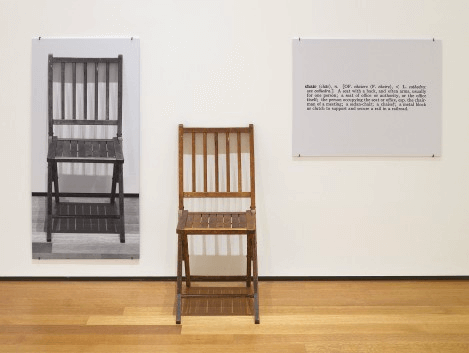
One and Three Chairs by Joseph Kosuth (1965) • Conceptual art examples
Kosuth combines conceptual photography, physical wooden material, and text in this piece which simultaneously questions the parameters of what art is as well as alternative representations of a common concept; in this case, a chair.
Duration Piece #6 by Douglas Huebler (1968)
Douglas Huebler, originally a Minimalist sculptor, found himself turning to conceptual art saying, "The world is more or less full of objects, more or less interesting. I do not wish to add anymore. I prefer, simply, to state the existence of things in terms of time and place."
The sixth piece of Huebler’s Duration series is composed of photographs documenting the natural progression of a rectangle of sawdust over six hours. Every thirty minutes, Huebler would take a photograph of the sawdust and the progression of the photographs is what we see here.
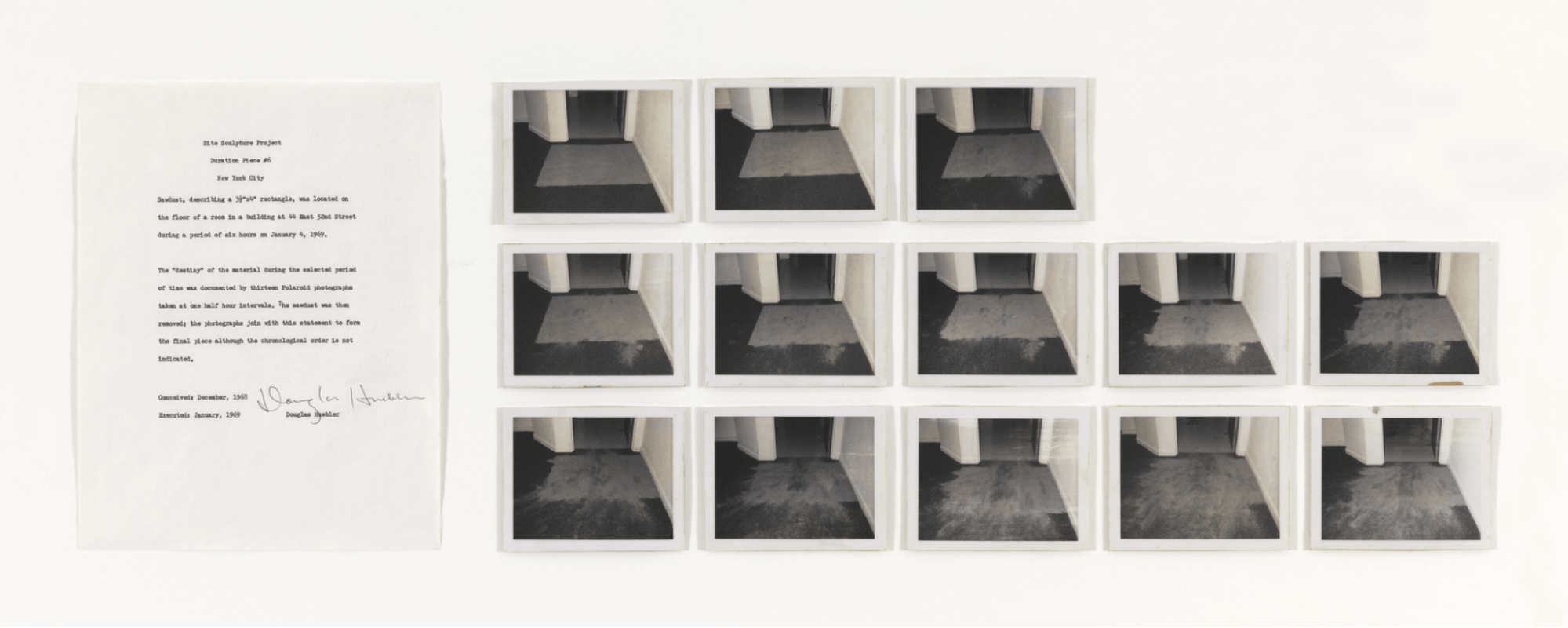
Duration Piece #6 by Douglas Huebler (1968)
Untitled (Perfect Lovers) by Felix Gonzalez-Torres (1991)
Exploring the concept of human relationships and the impact of the passing of time, artist Felix Gonzalez-Torres set two battery powered clocks to the exact same time. Over the course of a few days, the two clocks inevitably fell out of sync, displaying differing times.
Created in 1991, this more modern conceptual artwork serves as an allegory of some sort based on Gonzalez-Torres’ personal experiences.
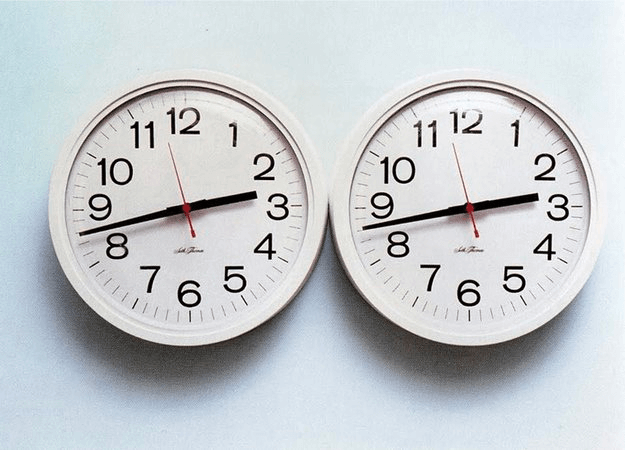
Untitled (Perfect Lovers) by Felix Gonzalez-Torres
Conceptual art can be a very controversial form of art in the sense that many of its works ultimately lead to a debate on the question, “What defines art?”
This exploration of the boundaries of art and its intended purposes has led conceptual art to be a lasting movement far beyond its genesis. Its exploration of concepts that may be simple, complex, or overtly abstract. But it has opened doors for artists that wish to create in the undefined areas of art.
UP NEXT
Explore More Styles and Movements
This was just one of many fascinating segments of art history. There are many eras, styles, artists, and movements to discover. Let's continue our study by choosing the next stop on your way to becoming an art aficionado. Below you can visit our Art Styles Index, our Art History Timeline, or choose an individual movement.
Showcase your vision with elegant shot lists and storyboards.
Create robust and customizable shot lists. Upload images to make storyboards and slideshows.
